#underground rain water storage system
Photo
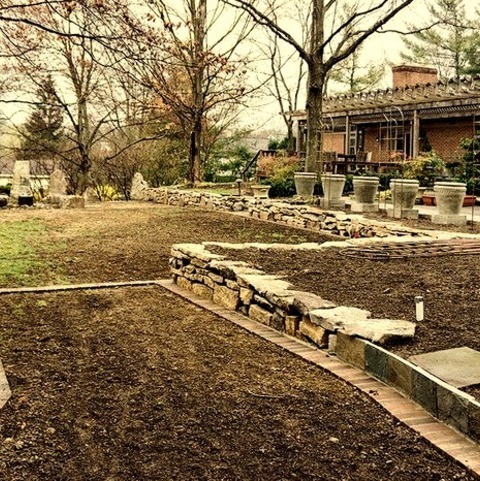
Brick Pavers - Traditional Landscape
Design ideas for a mid-sized traditional partial sun backyard brick landscaping in spring.
#stone fountain#stone boulder steps#large selection of ground covers#underground rain water storage system#brick pavers
0 notes
Text
Fountain - Traditional Landscape

Photo of a mid-sized traditional partial sun backyard stone water fountain landscape in summer.
#andy goldsworthy homage#standing stone boulders#irrigation from collected rain water#stone fountain#bluestone and brick header/edger#underground rain water storage system
0 notes
Text
DC Metro Natural Stone Pavers Landscape
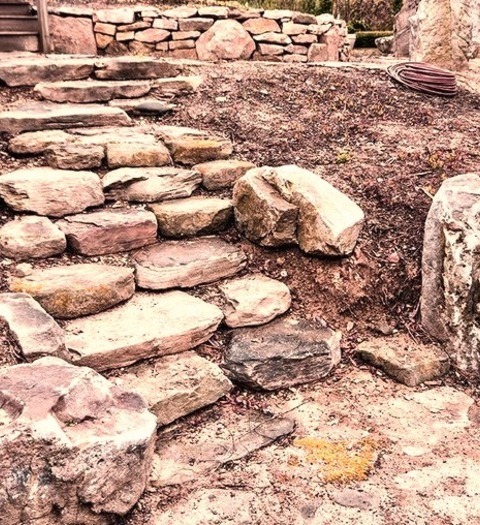
Inspiration for a mid-sized traditional partial sun backyard stone landscaping in summer.
#drystone wall#underground rain water storage system#urn fountain#vegetables and herbs in containers#large selection of ground covers#cooper arbor#flat river stone pavers
0 notes
Photo
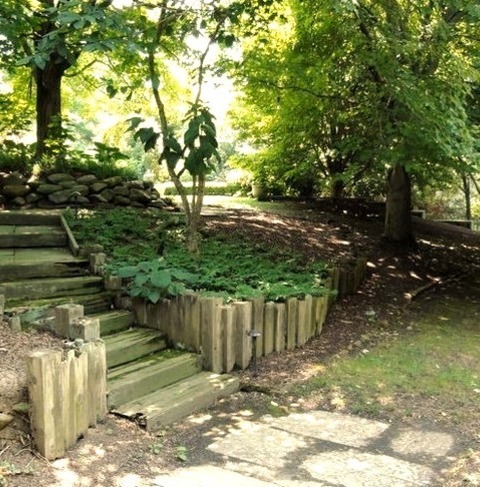
Landscape DC Metro
Summertime photo of a medium-sized, traditionally landscaped backyard with partial sun.
#underground rain water storage system#drystone wall#vegetables and herbs in containers#irrigation from collected rain water#large selection of perennials#standing stone boulders
0 notes
Photo
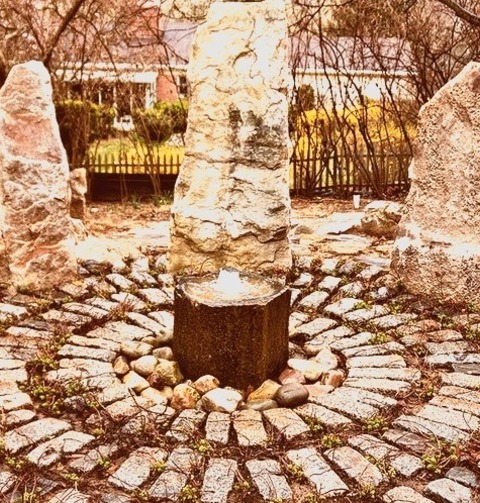
Landscape DC Metro
day daydaydaydaydaydaydaydaydaydaydaydaydaydaydaydaydaydaydaydaydaydaydaydaydaydaydaydaydaydaydaydaydaydaydaydayday
#fountain#large selection of ground covers#stone calendar circle#wood arbor#underground rain water storage system
0 notes
Photo

DC Metro Natural Stone Pavers
Design ideas for a mid-sized traditional partial sun backyard stone landscaping in summer.
#stone boulder steps#vegetables and herbs in containers#seat boulders#underground rain water storage system#drystone wall#stone calendar circle#pot flower garden
0 notes
Video
youtube
Getting the modular tank installation done efficiently working as a professional construction team
#youtube#water storage tanks#waterstorage#modular tank#underground tank#rainwater harvesting#rainwater collection#rain water management#rainwater tanks#rainwater collecting#rainwater capture#construction site#construction services#construction worker#umerall#water utilization#rainwater harvesting system#tank installation#manual installation#quick installation#easy installation#underground pool#water collection#cistern#reservoir
0 notes
Text
MODERN HISTORY
2ND BLOG _ The Indus Valley Civilization / HISTORICAL EVENT

The Indus Valley Civilization was one of the oldest urban civilizations, dating from 2500 BC to 1500 BC. Although research is still being done on how they handled the issue of water conservation in this interesting part of the world, some advanced water conservation and management practices can be named. In fact, the covered drains that run under the streets of the ruins of Mohenjodaro and Harappa show that their inhabitants were well versed in hygiene. The relevance that exists in relation to the problems of excessive water consumption and the events that occurred within this civilization are interestingly compatible, since at this point in the blog is where my theory is that in ancient times, water consumption was not as excessive as it is today, the reasons for this is not only because there was less population at that time, but because people knew how to distribute and appreciate the resources provided by the earth and they respected it very much.
The Indus Valley Civilization, which flourished along the banks of the Indus River and other parts of western and northern India about 5,000 years ago, had one of the most sophisticated urban water supply and sanitation systems in the world. Ruins such as Mohenjo-Daro in Sindh and Dholavira in Gujarat had settlements with some of the most sophisticated sanitation systems in the ancient world. They included drainage canals, rainwater harvesting, and street sewers. Sewage was disposed of through underground drains built with precisely laid bricks, and an elaborate water management system with numerous reservoirs was established. In the drainage systems, the drains from the houses were connected to the wider public drains laid along the main streets. The drains had holes at regular intervals for cleaning and inspection. Water from bathrooms on the roofs and upper floors was carried through closed terracotta pipes or open chutes that emptied into the street drains.
Some of the cities of this civilization contributed in a certain way to the conservation of water, since they had their own irrigation systems that allowed the conservation of water in a better way. These cities are the following:
Dholavira: One of the oldest water´s harvesting systems is located about 130 km from Pune along Naneghat in the Western Ghats. A large number of cisterns were carved into the rocks to provide drinking water to the traders who traveled along this ancient trade route. Each fort in the area had its own water harvesting and storage system in the form of rock-cut cisterns, ponds, tanks and wells, which are still in use today. A large number of forts like Raigad had tanks that supplied water.
Western Rajasthan: In ancient times, houses in parts of western Rajasthan were built so that each had a water harvesting system on the roof. Rainwater from these roofs was channeled into underground tanks. This system can still be seen today in all the forts, palaces and houses of the region.
Jodhpur: The old city of Jodhpur has over 200 stepwells, built from around the 6th century as part of an incredibly sophisticated water architecture," he explains. During the little rain the region receives between June and September, water is diverted from canals built on the hilly outskirts of the city to man-made tanks, or talabs.
In addition, one of the main figures in water conservation in this civilization were the engineers and urban planners, who were in charge of drainage systems and so on. They were known to have extensive knowledge on how to conserve water.
The results obtained by this civilization in terms of water conservation are the different implementations they gave to water conservation related to the system they had to maintain cleanliness at the time of using the water resource. The effects they had on the future plans of water conservation are mainly positive, since it is well known that this civilization was an intelligent and organized one, that knew how to control its resources very well and how to improve day by day, but above all, to do it in peace with the environment.
If we want to go deeper into this topic of the Indus civilization and water conservation, let's make a connection with the present time. Actually, water conservation is so important especially in environmental topics that are given in schools or in those talks that are given in any convention, but the thing here is that how could it be possible? Well, the answer is because of the ancient civilization that paved the way for us and made it easier for us to continue to practice water conservation today.
To finish this blog, let's review everything about this historical event, basically the Indus Valley civilization makes it easier for actual people to organize well water and not make such a mistake when we have to preserve it in the right way. If we start to become aware of this whole problem and start to organize our resources in the best possible way like this civilization did, we can probably improve all over the world with this issue of conniving water for a better change in general.

13 notes
·
View notes
Text
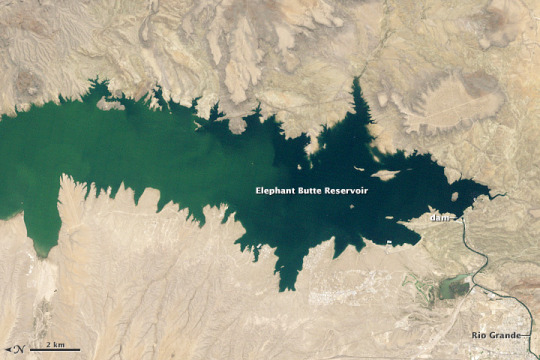
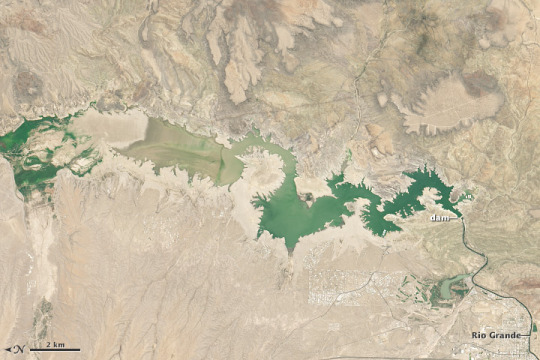
On This Day in 2013: Elephant Butte Reservoir
Since NASA Earth Observatory started publishing images in 1999, the archive has grown to contain more than 17,000 stories. This week, Image of the Day stories highlight this robust archive with a look back at images acquired “on this day.” Our brief retrospective illustrates that Earth observations are more than just snapshots in time; together they allow us to better understand—and marvel at—our diverse, changing planet. This image (lower), acquired on July 8, 2013, was originally published with the text below on July 26, 2013.
In the summer of 2013, Elephant Butte Reservoir dwindled to its lowest level in forty years. By late July, despite the arrival of monsoon rains, the reservoir was still virtually empty.
Numbers from the U.S. Army Corps of Engineers estimated the total water in storage to be 65,057 acre-feet (0.08 cubic kilometers) on July 24, 2013, about 3 percent of the reservoir’s capacity of 2.2 million acre-feet (2.7 cubic kilometers). The last time water levels were that low was 1972, after droughts in the 1950s and 1960s depleted Elephant Butte. On the other hand, the reservoir was filled nearly to capacity for most of the period between 1985 and 2000.
Located in southern New Mexico and fed by the Rio Grande, Elephant Butte is New Mexico’s largest reservoir. Created in 1915 with the construction of the Elephant Butte Dam, the reservoir provides water for about 90,000 acres (364 square kilometers) of farmland and nearly half the population of El Paso, Texas.
Drought severely strained the system in 2013. Spring runoff from snowpack in the mountains was well below average, and anemic rains throughout the beginning of the year left 80 percent of New Mexico grappling with either “extreme” or “exceptional” drought (the two most severe categories). The arrival of rains from the southwestern monsoon in early July offered a burst of moisture. But the impact on water storage at Elephant Butte was minimal, according to the Albuquerque Journal.
The Operational Land Imager (OLI) aboard Landsat 8 acquired the [lower] image of the parched reservoir on July 8, 2013, when it was filled to about 3 percent of capacity. The [top] image shows the reservoir on June 2, 1994, when it was at about 89 percent of capacity.
With such limited water supplies in 2013, farmers have faced the shortest irrigation season on record, receiving just three acre-inches (308 cubic meters) instead of three acre-feet (3,700 cubic meters) of water. To meet the demand, El Paso water authorities have had to drill new wells that tap underground aquifers. The city has also increased desalinization efforts and called for voluntary water conservation measures.
3 notes
·
View notes
Text
Rain Water Harvesting System
Installing a rainwater harvesting system is a wise and advantageous decision. The first and most important advantage is that it aids in water conservation. Water conservation undeniably influences a sustainable environment as the globe faces an increasingly pressing need to combat climate change. A rainwater collecting system might help you save money on your water costs. It is cost-effective, offers high-quality water, reduces reliance on wells, and is considered simple to maintain because it is not used for drinking, cooking, or other sensitive purposes.
There are multiple reasons why you should build a rainwater collecting system. But there isn't one that doesn't. It helps to decrease erosion and floods, has environmental advantages, and is an adequate irrigation method.
What is Rain Water Harvesting?
Rainwater runoff from roofs, parks, highways, open spaces, etc., is collected and stored by rainwater harvesting systems and can be used in future. It is possible to preserve or replenish the groundwater using this water runoff.
Ground Water Recharging:
According to recent research, excessive underground water tapping is to blame for the decline in groundwater. Urban regions' ever-growing populations and the rate of development have caused overuse of the water supply. Artificial recharging is, therefore, essential.
Advantages of Rainwater Harvesting system:
In areas where the groundwater level frequently drops, it also migrates the farmers' issues with continually lowering tubewell bores.
It facilitates using the primary water supply and prevents runoff from being wasted.
In urban states, it lessens flooding.
It increases vegetation cover.
It makes groundwater more readily available when it is needed.
It increases the water levels in dry wells, including bore wells.
As surface runoff is decreased, soil erosion is reduced.
It aids in energy conservation because a one-meter rise in water level results in a 0.40 kWh reduction in electricity use while lifting groundwater.
It lessens soil erosion, floods, stormwater runoff, and surface water contamination from fertilizers, pesticides, metals, and other sediments.
With no additives, dissolved salts, or minerals, it is a great water supply option for landscape irrigation.
Conclusion:
Utilizing rainwater collecting and harvesting is suitable for resolving the worldwide water crisis issue. Using a rainwater collecting system has several advantages for every community. In regions with enough rainfall but insufficient groundwater supplies, this straightforward approach to water conservation can help a fantastic solution take off. It will offer the most effective and sustainable method of managing water resources and open the door to other economic pursuits that will empower local populations.
Decide on "Diplast", the top producers of well-known rigid PVC pipes and water storage tanks and install a rainwater harvesting system in India. In order to effectively use rainwater and solve the current water issue, such rainwater collecting devices have become essential. Our top priority is quality. We place emphasis solely on the creation of high-quality products. Since they thoroughly inspect the entire lot before delivery, our team of quality specialists guarantees there are no problems at the customer's end.
2 notes
·
View notes
Text
Prevent Your Basement from Flooding Before it’s Too Late
Living in Canada means you have a spacious basement for all your storage and other needs. People use these basements for various purposes like storing out-of-need but close-to-the-heart stuff or if you are someone like Kevin Plank, you must be working on your big project out of it. Even though a basement is away from the world’s view, it serves as one of the most crucial parts of one’s home. And just like any other part of the home, it requires the same care and attention as any other. In the event of unprecedented flooding in your basement, you would want to contact an expert on wet basement repair Orillia.
Here are some preventive measures you can induct to save your basement from flooding issues.
Regular maintenance
The first and foremost practice to induct, like for any other purpose, is to have regular maintenance checks. Whether it is your home piping system or drainage system, maintenance checks regularly from professionals prevent you from having to spend hefty amounts in case of sudden flooding events. Any signs of leakages or water damage should be attended to with utmost sincerity. Industry waterproofing and repair experts provide proper maintenance services for your needs.
Sealing gaps and cracks
Basements are naturally prone to moisture capture because of their underground nature. In addition, due to the old nature of the structure or poor building materials, prominent gaps and cracks seem to appear. Water seeping through the cracks often amounts to significant damage to property in the basement and to the basement itself. In the event of excessive rain or any water-related issues, these cracks open up more and result in a wet basement Orillia. These instances can be prevented by calling for waterproofing professionals and wet basement repair services. They would provide adequate repair through their seasoned experts.
Proper ventilation
Inducting ventilation systems like fans and dehumidifiers to circulate air and remove moisture is the easiest and go-to preventive measure. In the event of serious flooding issues, these ventilation systems come in handy for drying out the basement. Installing overhead windows proves useful, too, as just opening up the windows in a dry climate can counter moisture capture in the basement.
Maintaining vegetation
Vegetation around the house has numerous positives, one of which is the utilization of excessive moisture under the ground. This prevents moisture capture or potential flooding in the basement. However, if you end up requiring assistance in wet basement repair Midland services, always get it done by esteemed professionals.
For more information, visit https://crackbusters.ca/
Original Source:- https://bit.ly/3TVOpmP
0 notes
Text
Greening the Workplace with Kyle Aichele (Santa Rosa Beach, FL)_ Innovative Commercial Landscaping Ideas for Eco-Friendly Businesses
Kyle Aichele
Greening the Workplace with Kyle Aichele (Santa Rosa Beach, FL): Innovative Commercial Landscaping Ideas for Eco-Friendly Businesses
In today's environmentally conscious world, businesses are increasingly seeking ways to incorporate sustainable practices into their operations. One area where eco-friendly initiatives can make a significant impact is commercial landscaping. By transforming outdoor spaces into vibrant, sustainable ecosystems, businesses can not only enhance the aesthetics of their properties but also contribute to environmental conservation efforts. In this blog, we will explore innovative commercial landscaping ideas for eco-friendly businesses, from native plantings to rainwater harvesting systems, that promote sustainability while creating inviting outdoor environments for employees and customers alike.
Native Plantings and Biodiversity Gardens
One of the most effective ways to promote sustainability in commercial landscaping is by incorporating native plantings and biodiversity gardens into outdoor spaces. Native plants are well-adapted to local climates and soil conditions, requiring minimal water, fertilizer, and pesticides to thrive. By using native plants in landscaping designs, businesses can conserve water, reduce chemical usage, and support local ecosystems by providing habitat and food for native wildlife such as birds, butterflies, and pollinators.
Biodiversity gardens go a step further by incorporating a diverse array of plant species, including native flowers, grasses, shrubs, and trees, to create vibrant, resilient ecosystems. These gardens not only enhance the visual appeal of outdoor spaces but also promote ecological resilience, soil health, and biological diversity. By cultivating biodiversity gardens with the help of experts like Kyle Aichele (Santa Rosa Beach, FL), businesses can demonstrate their commitment to environmental stewardship and create havens of natural beauty that inspire and uplift employees and visitors alike.
Sustainable Irrigation Systems
Water conservation is a critical component of sustainable landscaping practices, particularly in regions prone to drought and water scarcity. To minimize water usage and promote efficient irrigation, businesses can invest in sustainable irrigation systems such as drip irrigation, smart irrigation controllers, and rainwater harvesting systems. Drip irrigation delivers water directly to the root zones of plants, minimizing evaporation and runoff, while smart irrigation controllers adjust watering schedules based on weather conditions and plant needs, optimizing water usage and reducing waste.
Rainwater harvesting systems capture and store rainwater from rooftops and paved surfaces for later use in irrigation, reducing reliance on municipal water sources and mitigating stormwater runoff. These systems can be integrated into landscaping designs through rain barrels, cisterns, or underground storage tanks, providing a sustainable source of water for plants while reducing water bills and conserving valuable resources. By implementing sustainable irrigation systems with the help of experts like Kyle Aichele (Santa Rosa Beach, FL), businesses can minimize their environmental footprint, conserve water, and promote the health and vitality of their landscapes.
Permeable Surfaces and Green Infrastructure
Traditional hardscapes such as concrete and asphalt contribute to stormwater runoff and urban heat island effects, exacerbating environmental challenges such as flooding, water pollution, and heat-related illnesses. To mitigate these impacts, businesses can incorporate permeable surfaces and green infrastructure into their landscaping designs. Permeable pavements, such as permeable pavers and pervious concrete, allow rainwater to infiltrate into the ground, reducing runoff and replenishing groundwater supplies.
Green infrastructure features, such as bioswales, rain gardens, and vegetated swales, help manage stormwater onsite by capturing, filtering, and absorbing rainwater runoff. These features not only reduce flooding and water pollution but also enhance the aesthetic appeal of outdoor spaces and provide habitat for native wildlife. By integrating permeable surfaces and green infrastructure into their landscapes with the help of experts like Kyle Aichele (Santa Rosa Beach, FL), businesses can mitigate the environmental impacts of development, create healthier and more resilient communities, and demonstrate their commitment to sustainability.
Energy-Efficient Lighting and Outdoor Amenities
In addition to promoting environmental sustainability, businesses can enhance the functionality and comfort of outdoor spaces by incorporating energy-efficient lighting and outdoor amenities into their landscaping designs. LED lighting fixtures consume less energy and last longer than traditional lighting sources, reducing electricity usage and operating costs while providing bright, consistent illumination for outdoor areas.
Outdoor amenities such as seating areas, walking paths, and recreational spaces encourage employees and visitors to spend time outdoors, promoting physical activity, relaxation, and social interaction. By creating inviting and functional outdoor environments with the help of experts like Kyle Aichele (Santa Rosa Beach, FL), businesses can improve employee morale, productivity, and well-being while attracting customers and enhancing the overall experience of their properties. From shaded seating areas to outdoor fitness zones, the possibilities for enhancing outdoor spaces are endless, providing businesses with opportunities to create welcoming and inclusive environments that reflect their values and priorities.
Sustainable Landscaping Practices and Maintenance
Incorporating sustainable landscaping practices into maintenance routines is essential for ensuring the long-term health and vitality of outdoor spaces. From organic fertilization and integrated pest management to proper pruning and soil management, businesses can adopt eco-friendly landscaping practices that promote soil health, plant resilience, and ecological balance.
Organic fertilizers, compost teas, and natural soil amendments enrich the soil with essential nutrients and beneficial microorganisms, enhancing plant growth and vitality without harmful chemicals or synthetic additives. Integrated pest management techniques, such as biological controls and habitat modification, minimize the use of pesticides and promote natural pest suppression, preserving beneficial insects and minimizing harm to the environment.
Proper pruning and plant care techniques promote plant health, aesthetics, and safety, reducing the need for excessive pruning or removal of vegetation. By investing in sustainable landscaping practices and maintenance protocols, businesses can minimize their environmental impact, reduce operating costs, and promote the long-term sustainability of their outdoor spaces.
Cultivating Sustainable Outdoor Environments
Green landscaping practices offer businesses a unique opportunity to promote environmental sustainability, enhance the aesthetic appeal of their properties, and create inviting outdoor environments for employees, customers, and communities. From native plantings and biodiversity gardens to sustainable irrigation systems and green infrastructure, businesses can incorporate a wide range of innovative landscaping ideas to green their workplaces and demonstrate their commitment to environmental stewardship.
By embracing sustainable landscaping practices with the help of experts like Kyle Aichele (Santa Rosa Beach, FL), businesses can conserve water, reduce energy consumption, mitigate stormwater runoff, and support local ecosystems, contributing to healthier, more resilient communities and a more sustainable future for all. From small businesses to large corporations, every organization has the power to make a positive impact through sustainable landscaping, one green space at a time. Let us work together to cultivate vibrant, eco-friendly outdoor environments that inspire and uplift us all.
0 notes
Text
From Ideas to Action: Effective Water Conservation Projects for a Sustainable Future
1. Introduction
The global concerns of water scarcity and the impending water crisis demand immediate attention. It is our duty as humans to preserve and guard this priceless resource for coming generations. Projects aimed at conserving water are one of the main areas where creative solutions are required. These initiatives look for fresh and inventive approaches to lessen waste, restore rivers, and conserve water.
2. The importance of water conservation
Saving water is essential to guaranteeing that there will be clean, safe water for present and future generations. The need for water has grown rapidly as a result of the fast urbanization, industrialization, and population development, placing a heavy burden on available supplies.
Water conservation helps save money on water bills and safeguards the environment. We can lessen the need for excessive water withdrawal from rivers, lakes, and underground aquifers by putting water conservation methods into effect. Thus, a sustainable water balance in ecosystems may be maintained and the depletion of these water sources can be avoided.
3. Sustainable solutions for water conservation
It's critical that we search for sustainable solutions in our efforts to preserve water that have the least negative effects on the environment. The following creative project ideas for water conservation are setting the standard for a sustainable water future:
1. Rainwater Harvesting: One efficient technique to cut back on water use is to collect and store rainwater for later use. Installing rain barrels or cisterns to collect rainwater from rooftops is one way to accomplish this.
2. Greywater Recycling: Wastewater from daily activities like washing and showering can be cleaned up and utilized again for landscape irrigation and other non-potable uses. It's a clever technique to lessen the demand on freshwater supplies.
3. Drip Irrigation Systems: These systems reduce water waste by delivering water straight to the roots of the plant, in contrast to traditional sprinklers. This technique guarantees water conservation in landscapes, gardens, and agriculture.
4. Installing smart water meters can assist with real-time monitoring and control of water usage. Water waste may be recognized and addressed by individuals and enterprises with the use of precise data and immediate feedback.
5. Water-Efficient Appliances: Purchasing water-efficient fixtures such as low-flow showerheads, faucets, and toilets can significantly cut down on the amount of water used in residential and business settings.
6. Permeable Pavement: Rainwater can seep into the ground when permeable materials are used for parking lots, driveways, and sidewalks. This replenishes groundwater and eases the strain on stormwater management systems.
4. Innovative project idea: Rainwater harvesting
Rainwater harvesting is a time-tested technique that has become more and more popular in recent years for water conservation. In order to lessen the burden on freshwater resources and reduce water wastage, this project proposal involves collecting rainwater and storing it for later use.
Depending on the project's objectives and scale, rainwater collecting can be implemented in a variety of creative methods. Rainwater from rooftops and gutters can be collected for household use by installing rain barrels or cisterns. After that, you can use this water for non-potable uses including cleaning, toilet flushing, and plant watering.
Rainwater harvesting can be integrated into infrastructure and building design on a bigger scale. For instance, subterranean storage tanks that gather rainfall for irrigation and cooling purposes can be built into structures.
5. Innovative project idea: Graywater recycling
Reducing water waste in agriculture is the goal of a creative project idea called graywater recycling. Graywater is the term for wastewater that is produced by appliances like washing machines, sinks, and showers and can be recovered and used again for irrigation. We can lessen the demand on water resources and the quantity of freshwater needed for crop irrigation by putting in place graywater recycling technologies.
Graywater recycling can be used in agricultural activities in a variety of ways. Before using graywater for irrigation, farmers might install filtration systems to clean it up and remove any pollutants. Drip irrigation systems can also be used to provide effective and precise water distribution, minimizing water loss from runoff and evaporation.
Graywater recycling not only saves water but also gives plants nutrients because it contains trace amounts of organic debris and home cleansers. We can assist ensure our water future and support sustainable agriculture by implementing this creative project proposal.
6. Innovative project idea: Artificial wetlands
Artificial wetlands are another innovative project idea that can contribute to water conservation efforts. These man-made ecosystems mimic the functions of natural wetlands and provide a range of environmental benefits, including water purification and habitat creation.
In an artificial wetland system, wastewater or stormwater is directed to the wetland, where natural processes such as filtration, sedimentation, and biological action help to remove pollutants and contaminants. As the water passes through the wetland, plants and microorganisms break down and absorb the harmful substances, resulting in cleaner water that can be safely discharged into rivers or reused for non-potable purposes.
Artificial wetlands not only help to conserve water by treating and recycling wastewater but also provide valuable wildlife habitats, improve water quality, and enhance overall ecosystem health. Whether implemented on a small scale in residential areas or on a larger scale for industrial or municipal purposes, artificial wetlands are an effective and sustainable way to conserve our precious water resources.
7. Innovative project idea: Water-efficient landscaping
Water-efficient landscaping is a creative project idea that can significantly contribute to water conservation efforts. Traditional landscaping practices often involve high water usage, but by implementing water-efficient techniques, we can reduce water consumption while still maintaining beautiful outdoor spaces.
One approach to water-efficient landscaping is using native plants that are well-adapted to the local climate and require minimal irrigation. These plants are naturally acclimated to the area's rainfall patterns and soil conditions, making them more resistant to drought and reducing the need for supplemental watering.
Additionally, incorporating efficient irrigation systems can further enhance water conservation. Drip irrigation, for example, delivers water directly to the plant roots, minimizing evaporation and ensuring more efficient water usage. Smart irrigation controllers can also be used to automatically adjust watering schedules based on weather conditions and soil moisture levels, preventing overwatering and ensuring water is used optimally.
Water-efficient landscaping not only saves water but also helps to prevent soil erosion, promotes biodiversity, and reduces the need for chemical fertilizers and pesticides. By embracing these innovative practices, we can make a positive impact on our water resources while still enjoying the beauty of our outdoor spaces.
8. Innovative project idea: Water recycling systems
Systems for reusing used water are yet another creative project concept that can support water conservation initiatives. These systems gather and clean water from a variety of sources, including effluent from specific activities, greywater from sinks and showers, and even rainfall.
The need for freshwater resources can be decreased by using treated recycled water for non-potable uses such as industrial processes, toilet flushing, and irrigation. Water recycling systems range in complexity from expensive treatment technology to basic installations like rain buckets.
Water recycling not only helps preserve water supplies but also lessens the load on wastewater treatment facilities and lowers the energy and expenses involved in purifying and delivering freshwater.
10. Innovative project idea: Community awareness campaigns
These campaigns can take various forms, including educational programs, workshops, online campaigns, and community events. One effective strategy is to collaborate with local schools, environmental organizations, and community centers to reach a wider audience.
Through community awareness campaigns, individuals can learn about efficient water use, the impact of their daily habits on water consumption, and practical steps they can take to conserve water.
11. Conclusion
In conclusion, raising awareness about water conservation through community campaigns is an effective strategy to educate individuals about the importance of conserving our precious resource. By collaborating with local schools, environmental organizations, and community centers, we can reach a wider audience and empower them to take action.
By implementing these innovative ideas, we can create a positive impact on water conservation efforts and ensure a sustainable future for generations to come.
0 notes
Text
Sustainable solutions for environmental management of power plants
introduction
Power plants play an important role in providing electricity to communities and industry, but they also have a significant impact on the environment. Environmental management of power plants is key to minimizing these impacts and ensuring a sustainable energy future. This blog explores sustainable solutions for the environmental management of power plants, focusing on strategies for reducing pollution, conserving resources, and mitigating climate change.
Understand environmental issues
Power plants are a major source of air pollution, emitting pollutants such as sulfur dioxide (SO2), nitrogen oxides (NOx), and particulate matter (PM). These pollutants can have serious health and environmental impacts, including respiratory diseases, acid rain, and smog formation. In addition to air pollution, power plants can also impact water resources through cooling water and wastewater discharges.

Renewable energy integration
One of the most effective ways to reduce the environmental impact of power plants is to integrate renewable energy sources such as solar, wind, and hydropower. These power sources generate electricity without emitting greenhouse gases or other pollutants, helping to reduce climate change and improve air quality.
Energy efficiency and savings
Another important strategy for sustainable power plant environmental management is increasing energy efficiency and savings. By implementing energy-saving technologies and practices, power plants can reduce their overall energy consumption and greenhouse gas emissions. This includes upgrading equipment, streamlining processes, and promoting energy savings for our employees and communities.
Advanced exhaust gas control technology
Advanced emission control technology helps power plants reduce emissions of pollutants such as his SO2, NOx, and PM. These technologies include flue gas desulfurization (FGD) systems, selective catalytic reduction (SCR) systems, and electrostatic precipitators (ESP) that can remove pollutants from exhaust gases before they enter the atmosphere.
Carbon capture and storage (CCS)
Carbon capture and storage (CCS) is a technology that allows CO2 emitted by power plants and other industrial sources to be captured and stored underground. Although CCS can help reduce greenhouse gas emissions from power plants and mitigate climate change, it is still a relatively new technology and requires further development and deployment. waste management and recycling
Power plants generate many different types of waste, including ash from coal combustion and wastewater from cooling systems. Sustainable waste management practices, such as recycling ash as construction material and treating wastewater before discharge, can help reduce the environmental impact of power plants.
Community involvement and education
By interacting with local communities and educating them about the environmental impacts of power plants, you can foster support for sustainable environmental management practices. This may include holding public meetings, conducting outreach programs, and promoting environmental education in schools.
water conservation and management
Power plants use large amounts of water for cooling and other processes, which can have a significant impact on the environment. Implementing water conservation measures, such as using recycled water for cooling or installing dry cooling systems, can reduce water consumption and minimize the impact on local water resources.
Biodiversity conservation
Power plants can impact local biodiversity through habitat destruction, pollution, and other activities. Implementing biodiversity conservation measures, such as habitat restoration and endangered species protection, can help reduce these impacts and promote a more sustainable approach to environmental management.
Environmental monitoring and reporting
Monitoring environmental performance is essential for effective environmental management in power plants. Implementing robust monitoring systems and regular reporting on environmental performance can help power plants track progress, identify areas for improvement, and demonstrate their commitment to sustainability. Stakeholder engagement and partnerships
Effective environmental management requires collaboration with stakeholders such as local communities, environmental organizations, and government agencies. Building partnerships with these stakeholders can help power plants gain valuable insights, access resources, and foster collaboration in environmental efforts.
Regulatory compliance and best practices
Compliance with environmental regulations is a basic requirement for power plants. In addition to meeting regulatory requirements, power plants can also adopt best practices and voluntary standards to further reduce their environmental impact and improve their sustainability performance.
Eco balance and eco design
Considering environmental impacts throughout a power plant's lifecycle, from construction to decommissioning, is important for sustainable environmental management. Ecodesign principles help power plants minimize their environmental footprint by considering factors such as materials, energy efficiency, and waste management from the beginning.
CONCLUSION
Sustainable environmental management in power plants requires a holistic approach that considers the full range of environmental impacts and implements various strategies to reduce these impacts. By adopting sustainable solutions such as integrating renewable energy, improving energy efficiency, waste management practices, and stakeholder engagement, power plants can reduce their environmental footprint and become more sustainable. You can contribute to the future.
0 notes
Text
Underground Rain Water Harvesting System - Sudhit Enviro
Water conservation is revolutionized when Sudhit Enviro introduces a ground-breaking underground rain water harvesting system. Our innovative underground technology easily combines to provide effective rainwater collecting and storage. Make use of Sudhit Enviro's experience to turn rainwater into a useful resource for your need. With the help of our cutting-edge underground technology, say goodbye to water shortage and welcome sustainability. With Sudhit Enviro, experience water management in the future. Get more about our underground rainwater harvesting system by getting in touch with us right now.
For More info :-
Contact us at :- +91-7210128699 ,+91-9354962497
Address :- Plot No. 738, Industrial Area, Duhai, Ghaziabad, Basantpur Saitli, Uttar Pradesh 201206
#Underground Rain Water Harvesting#Sudhit Enviro#Rain Water Harvesting#Rainwater Installation Service
1 note
·
View note
Text
Below the Surface The Essential Guide to Basement Pump Services

For homeowners, a basement can be a valuable asset providing extra living space, storage, or housing essential utilities. However, the underground nature of basements makes them susceptible to water-related issues that can compromise the structural integrity and functionality of the space. Enter basement pump services—a crucial solution for safeguarding your home from water damage. In this guide, we'll delve below the surface to explore the essential aspects of basement pump services and why they are integral to maintaining a dry and secure basement.
1. Understanding Basement Water Issues
Basements are prone to water intrusion due to various factors such as heavy rain, snowmelt, inadequate drainage, or a high water table. This water can lead to issues like flooding, dampness, and mold growth. Basement pump services are designed to address these problems and prevent costly damage.
2. Types of Basement Pumps
a. Sump Pumps: Sump pumps are the workhorses of basement pump service. Installed in a pit (sump basin) in the lowest part of the basement, these pumps automatically activate when water levels rise, pumping the water away from the foundation.
b. Backup Sump Pumps: In case of power outages or primary pump failure, backup sump pumps are crucial. They operate on battery power and ensure continuous protection against flooding.
c. Water-Powered Sump Pumps: These pumps use municipal water pressure to operate, offering a reliable backup option. While not as common as battery backups, water-powered pumps are effective and can provide an additional layer of protection.
3. Installation and Maintenance
Basement pump services involve professional installation to ensure proper functioning. The installation process includes digging a sump pit, placing the pump, and connecting it to a discharge pipe that directs water away from the foundation. Regular maintenance, such as checking for debris and testing the pump, is essential to guarantee it operates efficiently when needed.
4. Preventing Basement Flooding
The primary goal of basement pump services is to prevent basement flooding. The pump actively removes excess water, mitigating the risk of water damage to the foundation, walls, flooring, and belongings stored in the basement. This proactive approach is especially crucial in areas prone to heavy rainfall or flash floods.
5. Addressing Moisture and Mold Issues
Beyond flooding, basement pumps play a role in controlling moisture levels. Excess moisture can create an environment conducive to mold growth, which not only damages the structure but also poses health risks. Basement pump services contribute to maintaining a dry and mold-free basement environment.
6. Protecting Home Value
A dry and well-maintained basement enhances the overall value of your home. Potential buyers are often wary of water issues in basements, and having a reliable basement pump system in place provides peace of mind and can be a selling point when putting your home on the market.
7. Emergency Preparedness
Basement pump services are a vital component of your home's emergency preparedness plan. During severe weather events or unexpected water intrusions, having a functional pump system can be the difference between a minor inconvenience and significant property damage.
8. Customized Solutions
Every basement is unique, and basement pump services can be tailored to suit the specific needs of your home. Professionals assess factors such as the size of the basement, the severity of water issues, and local climate conditions to recommend the most effective pump system for your situation.
9. Compliance with Local Regulations
In some regions, local building codes may require the installation of basement pumps, especially in areas prone to flooding. Ensuring compliance with these regulations is not only a legal requirement but also a prudent measure to protect your property.
10. Choosing the Right Basement Pump Service Provider
Selecting a reputable and experienced basement pump service provider is crucial. Look for professionals with a track record of successful installations, positive customer reviews, and a commitment to ongoing maintenance and support.
Conclusion
Below the surface of your home lies the potential for water-related challenges that can impact its structural integrity and your peace of mind. Basement pump services offer a proactive and effective solution to safeguard your basement from flooding, moisture, and mold. By investing in the right basement pump system and enlisting the services of experienced professionals, you can ensure that your basement remains a dry and secure space for years to come.
0 notes